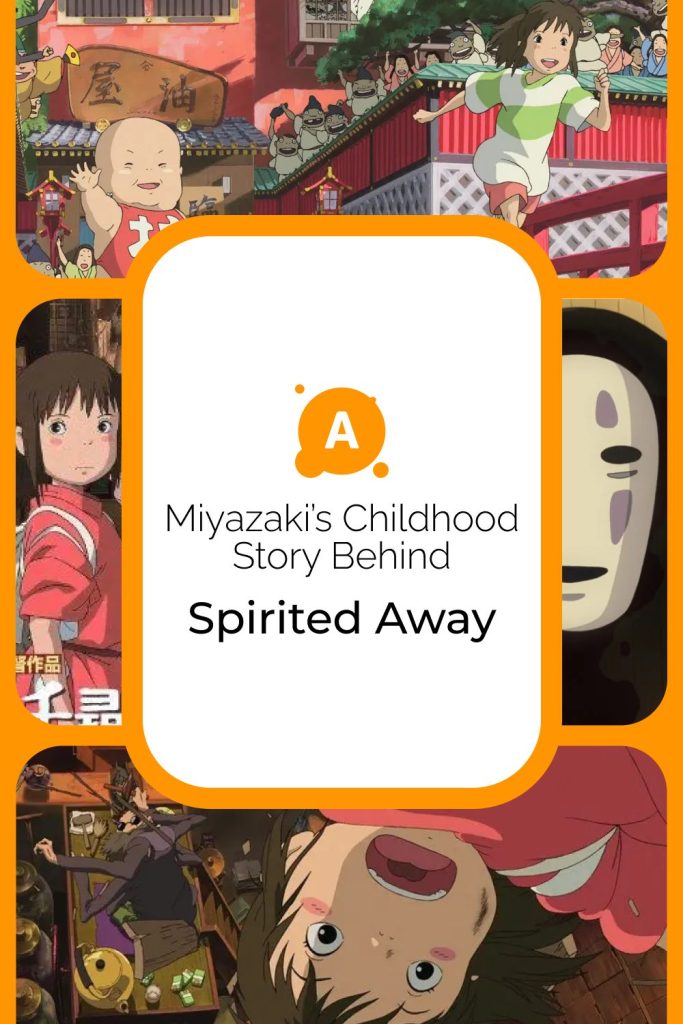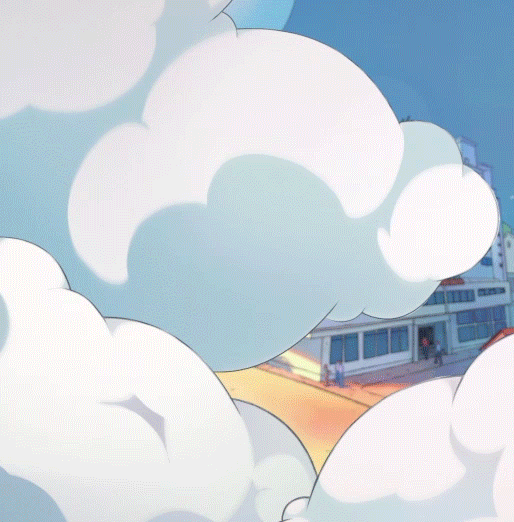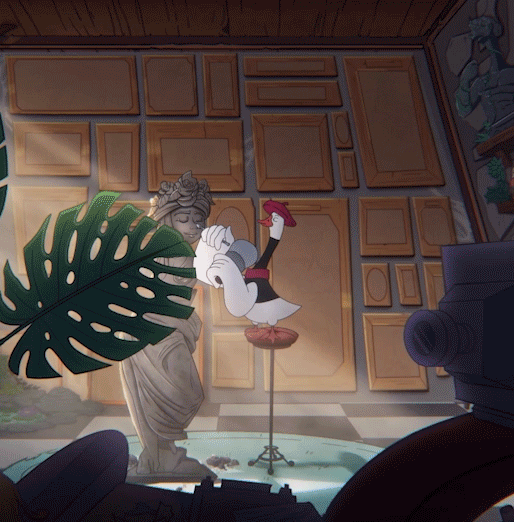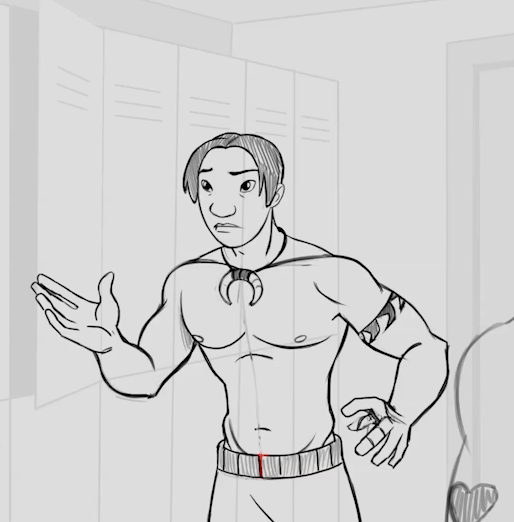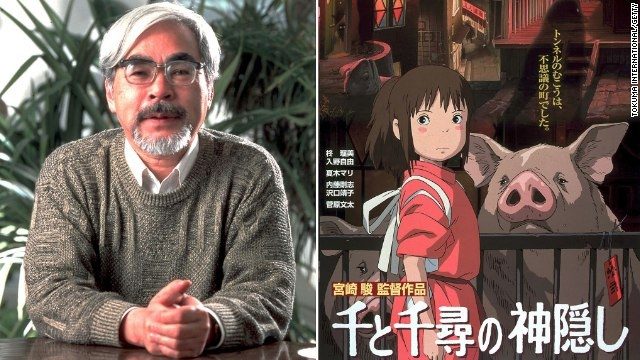
Hayao Miyazaki’s «Spirited Away» is more than just an animated film – it’s a cultural phenomenon that continues to inspire audiences worldwide. In a revealing 2004 interview, Miyazaki shared the real-life inspirations behind the movie, offering deep insight into how childhood memories, traditional folklore, and modern anxieties shaped this unforgettable story.
Childhood Curiosity Behind the Bathhouse Setting
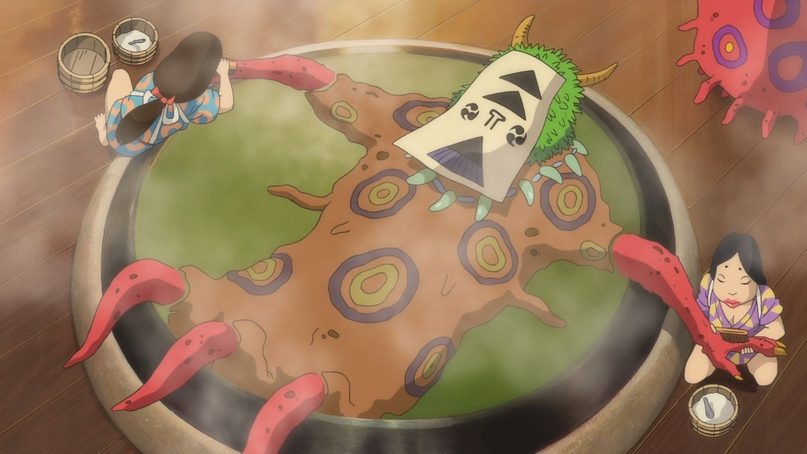
Miyazaki’s idea to set Spirited Away in a magical bathhouse stemmed directly from his childhood visits to a traditional Japanese town with public bathhouses, called Yuya Onsen. He vividly remembered small, mysterious doors hidden in their corners, sparking endless fantasies about what lay beyond. This sense of mystery and wonder became the perfect foundation for a story where spirits gather to rest and recharge – a unique concept that helped define the magical world of Studio Ghibli.
Gain a better understanding of Hayao Miyazaki’s film creation processes in <<Hayao Miyazaki’s Unique Storytelling Style In Animation: Mysticism, Flight, and Coming of Age>> article.
Designing Spirits: A Blend of Tradition and Imagination
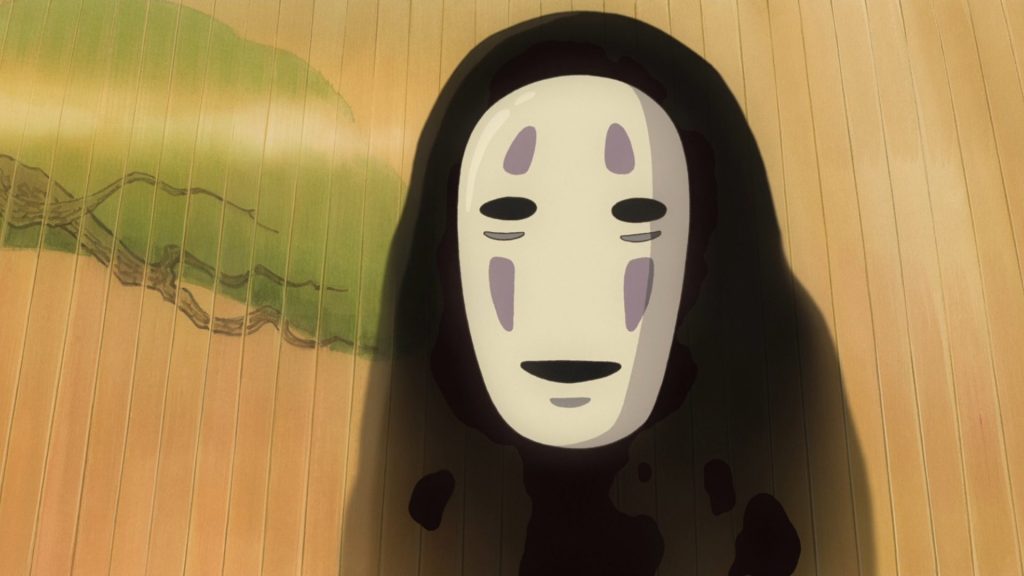
One of the most enchanting aspects of Spirited Away is its cast of spirits, inspired partly by Shinto beliefs and partly by Miyazaki’s own creativity. In Japan, it is believed that spirits inhabit everything – trees, rivers, and even kitchens. Some characters are rooted in this folklore, while others, like the iconic No-Face or Kaonashi, were original creations symbolizing modern societal emptiness and the perils of materialism.
Environmental Themes Woven Subtly Into the Story
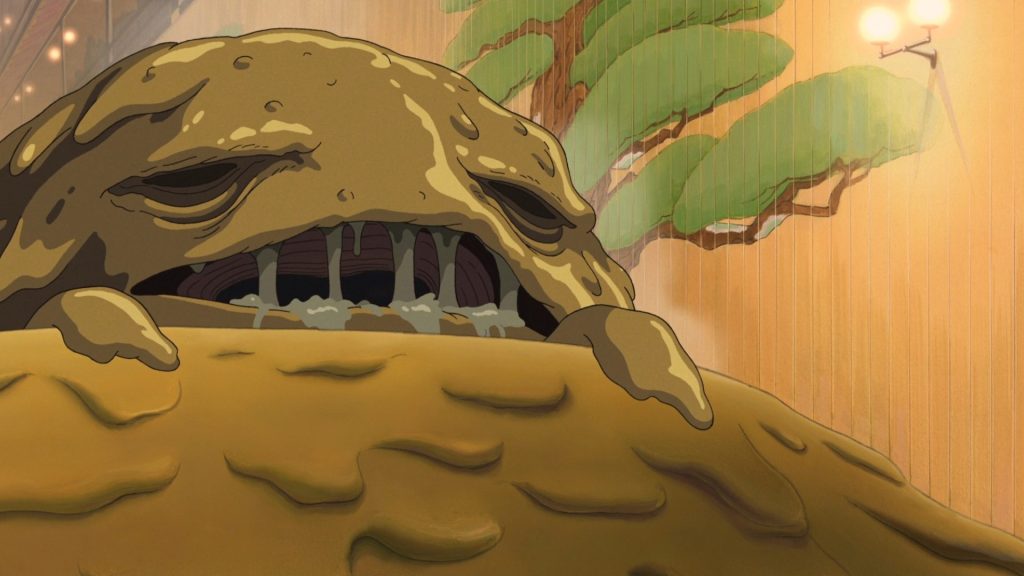
Many see the polluted river spirit Okusare-sama as a powerful environmental message in Spirited Away. However, Miyazaki insisted he never aimed to preach. His deep respect for nature naturally seeps into his storytelling. Having once participated in a river clean-up himself, he simply lets nature’s beauty and importance speak for themselves on screen – a signature trait of Studio Ghibli’s films.
Studio Ghibli Reflected in Every Scene
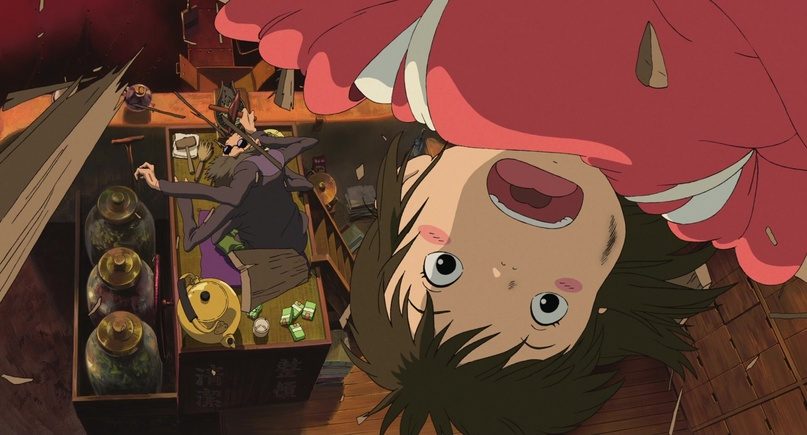
Beyond the fantasy, Spirited Away subtly mirrors the inner workings of Studio Ghibli. Miyazaki confessed that Kamaji, the spider-like boiler man, represents himself, tirelessly working behind the scenes. Meanwhile, Yubaba, the stern boss of the bathhouse, is a playful caricature of producer Toshio Suzuki. Chihiro symbolizes a new generation of animators stepping into the demanding, vibrant world of Studio Ghibli.
Religion as Part of Everyday Life
Spirituality flows naturally through Miyazaki’s films without becoming overt or dogmatic. In Japan, religion is intertwined with daily living – shrines, offerings, and rituals are common yet unobtrusive. Spirited Away reflects this cultural nuance, presenting spirits and gods as part of the world’s everyday fabric, rather than commanding figures.
Production Challenges: A Race Against Time
Initially, Miyazaki envisioned a three-hour film, but Studio Ghibli’s leadership urged him to shorten it to meet the 2001 release date. Miyazaki agreed, believing the story needed to be told immediately to resonate with the spirit of the era. Waiting any longer, he felt, would cause the story to lose its emotional impact.
Success Rooted in Humility
Despite the worldwide acclaim and box office triumph of Spirited Away, Miyazaki remains grounded. He doesn’t celebrate successes with pride; instead, he views each film as a learning opportunity. For him, the real achievement lies in making sure Studio Ghibli can create another film – and keep moving forward.
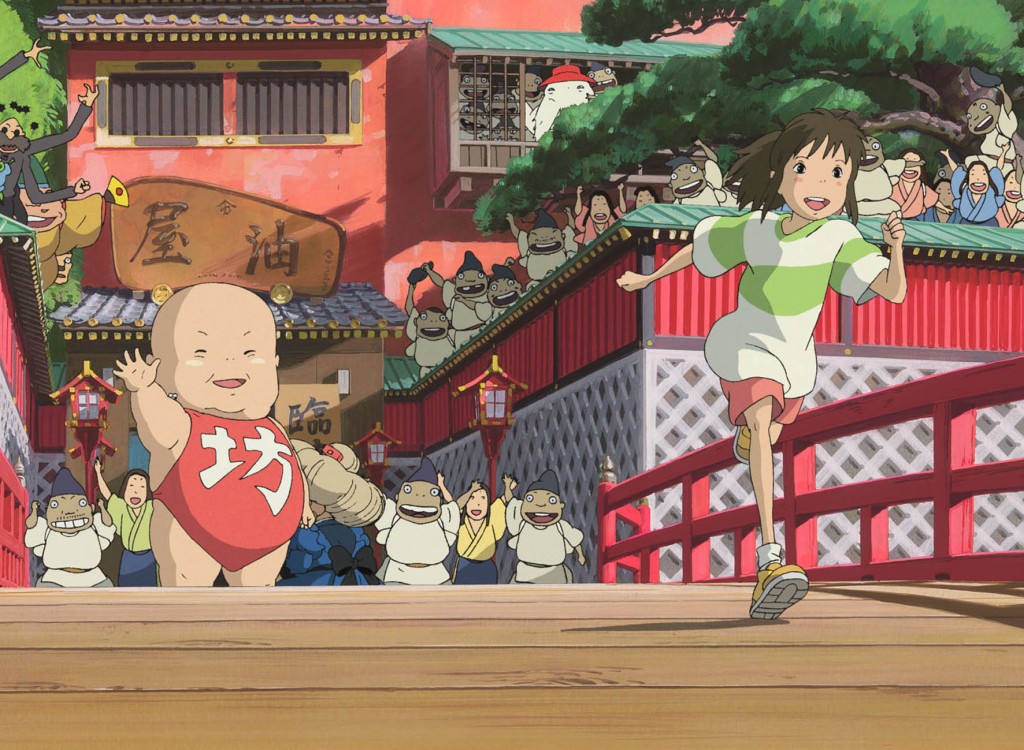
Looking to the Future
Even in the early 2000s, Miyazaki foresaw a turbulent future: terrorism, economic instability, and societal disillusionment. Yet, his goal remained unchanged – to create films that offer hope, ask important questions, and stay true to the human spirit. Here are the lessons you can apply to your own films.
1. Growth Through Adversity
Chihiro starts off as a scared, whiny child, but as she faces challenges, she becomes brave, resourceful, and compassionate. The lesson: We grow when we’re pushed out of our comfort zones.
2. Respect for All Beings
Spirits, gods, animals, and humans are all treated with dignity in the film. Even strange or scary characters have depth and deserve respect. This teaches empathy and the value of looking beyond appearances.
3. Greed Has Consequences
From Chihiro’s parents turning into pigs to No-Face’s chaotic hunger for attention and consumption, greed is shown as corrupting. The film urges moderation and awareness of our desires.
4. Identity and Remembering Who You Are
Names and identity are central—Chihiro must remember her real name to return home. It’s a reminder to stay true to yourself, even when the world tries to make you forget.
5. Environmental and Cultural Respect
The polluted river spirit and references to forgotten gods reflect concerns about modern society’s neglect of nature and tradition. It’s a call to honor what came before and care for the world around us.
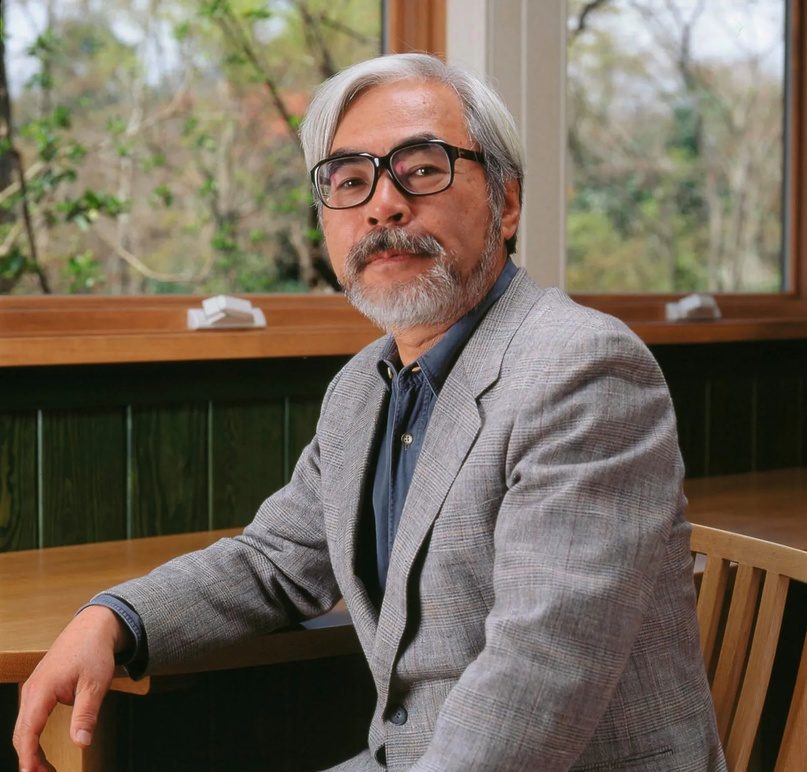
Why «Spirited Away» Still Matters Today
Just like Spirited Away reminds us of the power of resilience, creativity, and transformation, our Short Film Creation course offers a space to bring those same values to life through animation. In this hands-on, collaborative experience, animators, artists, and composers team up to develop an original short film from scratch, nurturing not only their technical skills but also their unique creative voices. With each project having the chance to shine at international festivals, this course isn’t just about learning—it’s about stepping into your own story, building something meaningful with others, and maybe even earning recognition along the way.
